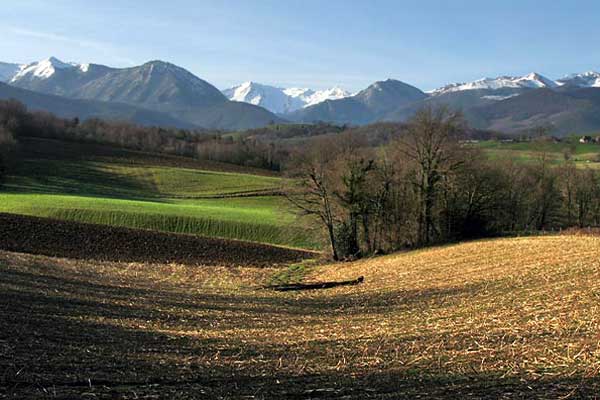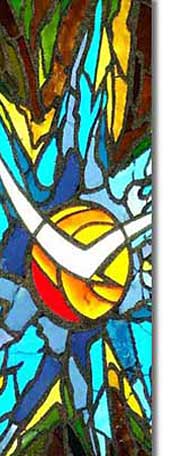Family News - 2010 March 14th
Contents
- A word from the Superior general
- Father Etchecopar wrote...
- A Betharramite Lent
- Ashram experience
- Prayer for the General Chapter 2011
- 5 minutes with Fr Phaïrote and Fr Arun
- In memoriam: Fr. Sauveur Londaïtzbéhère (1922-2010)
- The Betharramite adventure in China (3)
| PDF format |
A word from the Superior General
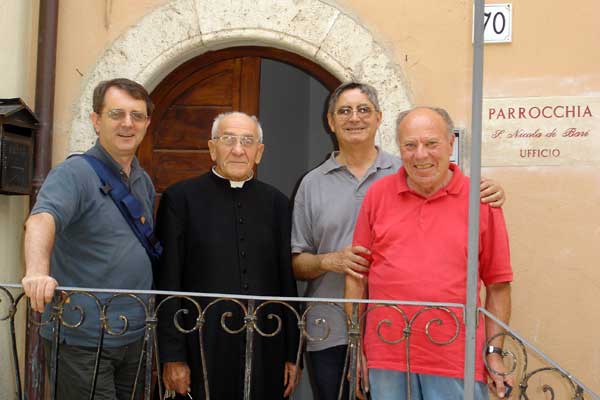
What we have seen and heard we cannot keep silent
(Acts 4,20)
The crisis situation which we are traversing at the moment in consecrated life obliges us to return to the essential, for we can certainly not boast of superficial things. Just as with any other trial, this crisis is purifying us and is making us more authentic. What is really unique and necessary is the spiritual experience of the charisma which St Michael Garicoits left us. This is what we have been insisting on for a long time and our formators have been urging us in the same way.
This experience gives joy to our life and passion to our mission just as it was for the apostles. What we have seen and heard we cannot keep silent (Heb. 4, 20). Because the experience of Gods love is not to be kept deep down. On the contrary, we must bear witness to it by our actions, relate it, and proclaim it in our own words. In this way we are helping our brothers to be faithful, we are constructing the community and the Church, we are helping others to get to know Jesus Christ and to enjoy the same happiness, we are helping them to give a new direction to their lives and to enter into the group of witnesses, disciples and missioners of the Lord.
A careful reading of the Bible gives us lots of accounts telling of transforming meetings with the Lord: whether it is in the psalms which relate and proclaim the deeds of the Lord, or stories of vocations, or the confessions of Jeremiah, or accounts of the apparitions of the Risen Christ, or the kherigmatic sermons of St Peter, or the stories where Jesus tells of his filial relationship with his Father and his condition of messenger, as found in St Johns Gospel.
Relationship with Jesus is what religious in community, like ourselves, hold in common. It is Jesus himself who realises the unity of our communities. Each one of us lives united to Him through our Baptism and our religious profession. He is the link which unites us to each other and with the Father in an experience of communion. This is something which we experience every time we celebrate the Eucharist. We each experience it in a different way and such a diversity of ways can enrich the original way of living out our faith, our consecration, the community and the mission. Consequently, it is important that, for the vitality of our communities, we should be able to share the way each one lives his relationship with the person of Jesus Christ.
It is only in the sharing of this experience that fraternal communion is constructed. It is all about sharing how we personally live communion with Jesus in the face of lifes events in the light of the Word of God. It is also about sharing the saving action of Jesus in the events which we are traversing or the people we are accompanying on our mission. Through our vocation and our ministry we are the privileged witnesses of the endless activity which the Holy Spirit operates in peoples hearts. For we are living at the heart of the mystery of the Incarnation.
When a community can reach such a point of communion, the life of its members is totally transfigured; prayer is lively; community celebrations proclaim the wonders of the Lord and everyone prays for needs which have been exposed during the community prayer; our consecration is a witness to the maturity, the stability and the joy; unity among the brothers is a joy which each one longs for from the depth of his being; the mission becomes exciting; preaching is full of life. It doesnt matter if we have to spend time away from the community for the sake of the mission, for we know that we have been sent by the brethren. While I am away and when I pray, I feel united to my brothers who are also praying for me. And when I return to the community I have so many signs of the merciful workings of the Lord to share with them!
When all this is missing community life is reduced to eating together, to sleeping under the same roof, the role of the Superior is reduced to saying grace before meals, prayer becomes a boring recitation of the Office or our own private devotions. And if a brother is absent, no one bothers to find out where he is. We feel ashamed to speak of matters spiritual; the spiritual life is treated either in a rational manner or as a joke. The consecrated person isnt committed by his preaching he simply explains the doctrine. And pastoral activity is viewed as a source of income; if it wasnt going to be a source of money, there would be no point in pursuing it.
Explaining the faith involves people, it is contagious and it is fascinating. When I give some one the right to say something, it changes him and it changes me too. It is a demanding experience for it involves each and everyone. We all have something to say and to give. The links uniting us are formed by the theme of the story and the act of listening. Without spiritual communication a community is without solid foundations. It is easy to understand that there is a certain resistance when it comes to exposing our relationship with Him who is our life, that this resistance can be expressed by silence, by intellectual arguments or jokes, but such a relationship involves us and we cannot do as we like.
Sharing this experience of faith has always been important in the life of the Church. One has only to think of the kerigmatic preaching at the beginning of the Church, of the practice of the collatio, of the monastic life, of the autobiographies of the Saints, of the Confessions of St Augustine, of The Life of Saint Therese, of the spiritual chats of St Benedict with his sister St Scholastica, of St Teresa and St John of the Cross, of the accounts of conversion of some of our contemporaries, of the importance of testimonies during prayer meetings and meetings of new communities. They do much good to our spiritual life! Faith travels by hearing.
Last year, when we launched the regionalisation, it seemed that it could not simply be an administrative exercise. For each religious and for each community it had to go hand in glove with something interior which would help us to be more faithful to our vocation and our mission. We thought about the Narratio fidei. During the Council of the Congregation we invited two priests from Padua who by using this method had seen the transformation in the lives of the priests in their diocese. During the Superiors meeting in Bethlehem in April, we again worked with this experience. In certain Vicariates, the Narratio fidei was used during retreats. It has become a common exercise in the meetings of certain communities and during the Councils of the congregation, regional councils and Vicariate Councils. It is helping us to be more faithful.
Gaspar Fernandez,SCJ
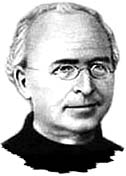 Father Auguste Etchecopar wrote...
Father Auguste Etchecopar wrote...
To the Seminarians at St-Josephs (Buenos Aires),18th March 1886
Continue to make progress with the help of the Lord. Never be discouraged by your failings; on the contrary, make use of them to be wiser, more careful; to be more attached to prayer, to the rule and to a filial obedience. Prayer sanctifies our deeds; the Rule sanctifies our obedience; it uncovers and puts an end to Satans plots. When there is no prayer , life is very human; when there is no Rule we are the victims of our passions. However, sanctified by prayer and ruled by obedience, your work will be a fruitful apostolate. As Apostles of the Divine Heart we should be the light of the world by our knowledge and the salt of the earth by our piety. May St Joseph do this for you! May Our Lady bless you.
Betharramite Lent
Can we talk about a Betharramite Lent in the sense of a special emphasis on an original vision, marked by our spirituality, of that special time which is both central and traditional to the life of the Church? I believe we can, if one is inspired by our roots, if we delve into the source of our charism by expressing what is characteristic and essential. I am taking these original characteristics from the Manifesto of our Founder, who is like a doorway opening on to the contents and spirit of our Rule of Life, and at the same time makes it into a resume of pastoral theology, unequalled and matchless for us.
Exinanivit semetipsum, factus obediens usque ad mortem, mortem autem crucis. We are all familiar with this quotation from the hymn in St Pauls Epistle to the Philippians (2,11). It points to the aim, the arrival of the route of Christ, the Cross; the Cross which is raised at the beginning of Lent and which Christ freely accepted, for love of us.
But in his Manifesto, St Michael stressed the beginning of the journey: the Incarnation ,the offering which the Word made to the Father of the whole of his existence on this earth. Our Founder joins the beginning and end of Christs mission: it is a path (or in more biblical terms it is an exodus.) which leads from the love of the initial offering to the love of the final and total offering. And on the way, there is the love of each individual, but especially the poor, the marginalized, and sinners. Then, St Michael concludes that from the love of God revealed in Jesus Christ the need for our response to Gods love, a God who has loved us this far (this is how God loved us).
Consequently, it would seem to me that a Betharramite Lent could be imagined and defined as a two-direction exodus: Gods love made visible and real in the Incarnation and the Cross of Christ: and mans love in the face of such a wonderful sight of the Word of God who came down o n this earth and was put to death for us.
The first direction: The offering of the Word to his Father and his whole life are a mystery of love which is expressed and shown (but never exhausted) in the supreme witness of his love for mankind: the Cross. On several occasions St Michael contemplates this mystery departing from the Incarnation (considered with amazement at Gods condes-cension) and which leads to the folly of the Cross.
In the He emptied himself St Michael sees the depth and even the foolishness (considered with cold eyes and hearts, that is, without the light and warmth of love) an attitude which destroys the individual to replace it by another, an attitude of full and total relation with another identity: complete openness with our humanity. This is Gods attitude for mans sake, both inexpressible (divine revelation) and unbelievable from mans point of view. At the same time it is an exalting assurance of salvation, to which the Cross attests without any possible doubt.
The second direction: such an incredible sight should lead the Betharramite (and anyone else) to imitate Jesus, destroyed, stripped, and obedient to consecrate himself to bearing witness and to obtaining that others should be loved and saved by the love of the Incarnate Word born in our flesh and crucified. St Michael tells us that love, especially total love demands a loving response which should be on the same wave length, although not quite so intensive. Renewal means believing in love and welcoming it; it means above all recognizing that there is need for love; it means understanding the immensity of love so as to live it in all its complexity and totality. Such a sight requires of us to have the same feelings as the feelings of Jesus Christ, that is to set out on this same journey of self giving to God and to the brethren, who are redeemed and loved by Christ, by being seized by his love and his example so as to communicate freedom and salvation. To continue his incarnation in the History of mankind. The Betharramite is a man of the incarnation, who during his life prolongs, witnesses and communicates the Here I am, I am coming of the divine Word and does this while remembering, just like Christ, mankind in his history, his demands and his questions.
I believe that the Betharramite Lent can be identified and be resumed as a bidirectional exodus to be resumed and followed in the light of the love of the Incarnate Word. Today, the Church herself stresses that religious life is a pathway in imitating the life of Jesus (Vita Consecrata 40); it is a constant exodus, personal and community taking as its modal the Incarnate Word in its dispositions: the gift of self for the salvation of mankind, perfect obedience to the Father, self forgetting and love for all those in any kind of need.
Beyond the Cross: but St Pauls text quoted here by St Michael, continues: the Lenten journey doesnt stop with the Cross, it is continued in the exaltation of the Risen Christ. Exaltation is the fruit and consequence of his obedience to the Father: this is why
says St Paul. The Father exalts the Word for his obedience, his total adhesion to his will and his loving offering for all mankind.
The journey, the exodus of the Incarnate Word comes to an end with the life which he gives to those who accept his salvation; it is the resurrection from all sin and every weakness; it is the certitude that the living God does not abandon us to the sadness of death, the joyful manifestation that Christ has become man to be the revelation of an eternal and unchanging love towards all mankind.
In this typically Betharramite outlook (specially recalled by the Church during the Grand Jubilee as a way and pastoral encouragement for the Third Millenium), the Incarnation points not only to the Cross, but through the Cross it points to Resurrection and Life. Here bursts forth the joy of the Life offered by God, the joy of procuring for others, as St Michael says in his Manifesto. And thus it is that the joy of Easter becomes the engine and dynamism for the Mission.
This is how the exodus of Lent leads to Easter and from Easter to History: our own History and that of humanity. For the Betharramite, the mission continues in the witness he gives and the transmission of Life received from the Incarnate Word.
Ennio Bianchi, SCJ
Ashram experience
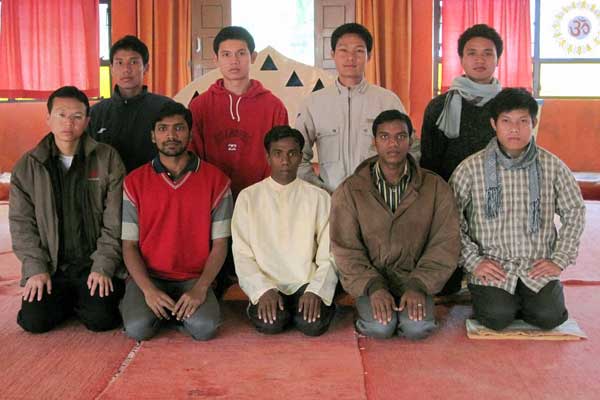
People all over the world are in search. Our search is for the meaning and purpose of our life, for the goal of our existence, to become united with the Word become flesh. The quest in this movement is a spiritual one and we are all fellow-pilgrims journeying together in this pilgrimage. We the Betharramite novices joined in this journey in a way more of Indian Spiritual journey.
We the nine novices, as part of our Noviciate program, began our ashram experience in Anjali Ashram which is situated at the foot of Chamundiswari hills at the outset of Mysore (Karnataka) which lasted from 11.12.09 to 20.12.09. Ashram is the place of serenity and with the atmosphere of inner happiness. Holistic Experience of soul (Atma Purna Anubhava) is the theme of this ten days initiation into self-realization and through that of God-realization.
The spiritual discourses or the initiation guidelines (upadesas) of the Chief Priest (Acharya-Guru), enabled the seekers to situate their spiritual quest by a process of centering and re-centering ones life. We the seekers (sadhaka) were challenged to be serious about the goal, (siddhi) believed in the possibility (sadhya) of attaining it and hence to practice the spiritual exercises (sadhana), seriously and regularly, with determination and endeavour.
The very first day itself, the master (guru) called for silence both of interior and exterior. He said, Dont perceive through your senses, dont understand through your mind instead just observe. Allow, observe and admire the Spirit through the eyes of faith. We were initiated to the Integral Indian Spirituality the universal exercise (sadhana) of Yoga for harmony of life and guided to the specific exercise (sadhana), of meditation (dhyana) in particular.
The key words for the first three days were: awareness and freedom, silence and stillness, being quiet and just being. We were encouraged to realize control of self, body, tongue and mind (all senses) arrive at one-pointedness (ekagrata) and to experience total passivity and stillness (Samadhi) in ever growing consciousness (cit). By the end of the third day we were led to see and experience the unity of oneself with God (Brahman), communion with all people (community of seekers), commitment to society, and harmony with nature, so that the human persons main and only activity may be to enter into ones inner shrine, the sanctuary of the Spirit in a state of consciousness and bliss.
This spirituality was challenged in the next two days by posing the question, who is a religious person? in the Indian religious and cultural traditions, in the actual Indian context (soc-eco-pol) and in the Judeo-Christian-ecclesial tradition and trying to answer Am I recognized as a religious by others, Christians and people of other religions? we could arrive at a conclusion of picturing Christ as the perfect religious with the perfect goal of doing the will of the Father and striving to imitate Christ..
Throughout the ten days of experience, we could listen to the voice of the Spirit in solitude and silence. We could understand that the awareness of self will take us to the awareness of God (Brahman). This is the same as the experience of the Samaritan woman. It was very much challenging to become more human so that we could become more divine.
The whole atmosphere of the ashram helped us to ponder over the call to become an effective Betharramite that is to realize the indwelling Brahman, to become a mystic of incarnation. Renunciation is condition to become a realized person (Jivan-Mukta), to become Jesus. The Indian Spiritual ways of attaining God (Gnana marga, Bhakti marga, and Karma marga) helped a lot to realize that God is strengthening us in truth, so that love emerges and because of love service emerges. Even the service (seva) which was offered to the ashram impelled us to become united with God and with nature.
The synthesis of life was recommended in terms of simple and poor life-style. Each day we were involved in events like morning meditation (Pratha samdhya), Holy Eucharistic celebration in Indian Spiritual method, ashram service, spiritual discourse (upadesha), midday meditation (madhyan samdhya), yoga, evening meditation (saayam samdhya) and sharing with the community (satsang). The interaction with the people of different faith and simple vegetarian food were also means to deepen our relationship with oneself, with others and with God.
At the culmination of our ashram experience we could arrive at a synthesis of God-experience, religious life and Indian Christian Spirituality, as well as by a lived-experience of the ashram which is primarily and essentially a state of life rather than a place, a state of relentless search and a non-stop movement embodied in persons and life style.
As a whole, united in the Most Sacred Heart of Jesus, under the providential care of our beloved Mother of Betharram and with the vibrant spirit of our father Michael, the nine little yet beautiful branches of Betharram had a prayerful experience in the ashram, which we cherish and relive everyday. All glory and honour be to the Most Merciful Heart now and forever.
The Novices of Blessed Miriam Region
Prayer for the General Chapter Bethlehem, May 14-31th 2011
O Holy Spirit, come to us and turn our hearts towards the Lord.
Born in Bethlehem, it is there that he awaits us.
He invites us to recreate his dedication and his gentleness in our World and in the Church. Within our limits, he wishes to show the immensity of his tenderness.
Master of the Interior Life, show us in truth what we are and what we are doing.
Give us the Wisdom to discern what is good and the strength to put it into practice.
Help us to be obedient to his Grace, always the same and yet ever new.
Help us to live according to the two-fold law which you have inscribed in our hearts:
The love which unites us to you as we serve our brothers;
And the obedience to be ONE and to do the Fathers Will.
May our Rule be our eighth commandment, our path to fidelity and of shared joy
May our woes make us ever more humble, more generous, and stronger in and through Jesus Christ.
May we have but one motion and one prayer,
That following the Blessed Virgin Mary, St Michael and Blessed Mariam:
We may make of our entire life an unending prayer: Here I Am.
Amen.
5 minutes with... Fr PHAIROTE and Fr ARUN
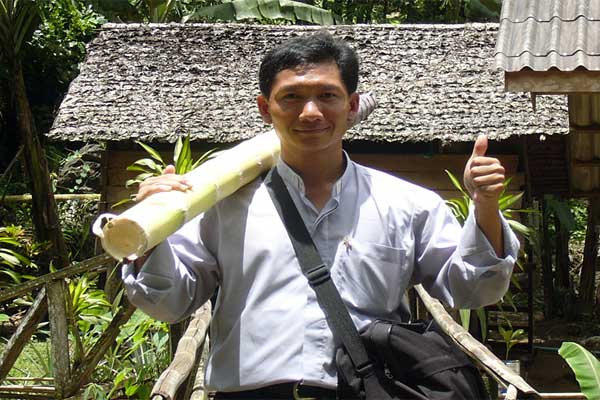
On the 16th May 2008, a wonderful adventure was about to begin for Fr Phairote Nochatchawan and Fr Arun Kano.These two young priests were leaving Chiang Mai to construct a brand new Betharamite community at Maetawar, in the diocese of Nakon Sawan in Thailand. Let us now, thanks to them, make the discovery of this new mission field.
Nef : It will make two years in May that you are in Maetawar. Can you present us your district from a social and human point of view?
- Yes, it is already almost two years that Fr. Arun and myself, Fr. Phairote, are working in the Diocese of Nakon Sawan. In Maetawar and Maetan missions we have 72 villages spread on the mountains in four districts of Tak province. In 17 of those villages there is a church. (in the other villages there are isolated catholic families). We have two centres: 1. St. Francis of Assisi Centre (Maetawar) with 31 students, boys and girls, of the secondary school; 2. Agricultural Training Centre (Pa Noy Pu) with 30 boys and girls. We have also three village schools: 1. Fresh Flower School (dok mai sot), in a far away village; 2. Maewey Elementary School ; 3. Preparatory school at Mae Sa Pau. Working in this missionary field are three priests, ourselves and Fr. Alain, m.e.p.; two sisters, 15 catechists, 5 tutors and 2 volunteers.
And the Christians, who are they and how many?
- All the Christians in our care are Karen (Skaw Karen and Po Karen). 1843 are baptised and 693 are catechumen, all together 2536.
Is this much different from what you knew until now? Do you find the work here different than the work in your native land in Chiang Mai Diocese?
- Yes, in my experience I can see several differences between Chiang Mai Diocese and Maetawar-Maetan of Nakon Sawan Diocese. For example: 1. Religion: in this area people show interest and convert to Catholicism more and more, especially the animist, while know-how and faith among the Catholics are not rooted as it should be.
2. Language: the Karen of this area speak a slightly different language and for the transcription of the language they use Burmese characters, while in Chiang Mai we use roman characters.
3. Liturgy: for the marriage ceremony for example, the bride to be will enter dressed with her long white dress of girl and after the sacramental engagement she will ware the dress of a married woman.
What is your main activity? And who are your main collaborators?
- Our main activity is pastoral work and evangelization in the villages scattered on the mountains and also pastoral care of the young people in the centres. Involved in this activity are the priests, the sisters, the catechists and the tutors. (Fr. Phairote) Stand up and walk alone , this is our policy. For this reason , beside the pastoral work, I try to walk with the people to let them know that they can walk on their own feet. Last year for example I planted rise in a plot of land bought by Fr. Alain, m.e.p. few years ago and left untilled since then, because, being alone, he couldnt cope with that extra work. Fruit of this initiative: the youth of the two Centres gathered experience, practicing what they studied at school; the parents of the students have been invited to give back some contribution, giving some working days, towards the education of their children; the children at the centres eat the rise they produced, which is highly beneficial on all sides. (Fr. Arun).
Is the education of children and youth an important part of your ministry?
- The education of children takes an important part in our ministry, because the standard of the village schools run by the education department in those remote areas is very low. The existence and the quality of our centres for youth are a necessity to form al least a number of young people who can help raise the standard of education of their villages.
Since your arrival, the conditions of the mission have them changed ? - R. The senior missionaries gave us this advise: when you reach your new place shut your mouth first, open wide your eyes to see and record everything clearly; open wide your ears to listen and collect information and ideas from experienced people; open wide your heart and try to understand the work you are called to do. We are thankful to God for giving us an example to follow, the missionaries and those who trained the workers for the harvest. We carry on the work with the ability and the energy we have. The number of Christians have increased.
What are the major challenges to which you are confronted on the point of view of the evangelisation ?
- Roads and tracks in the forest are very bad, we have to encounter people believing in a world inhabited by ghosts, but these are not the real challenges we have to face. In our pastoral work and in our front line evangelization the real challenge resides in the duty laid on our shoulders and in our heart: How can we handle with care a large boat flowing down the rapids of the river in the midst of a stormy never falling wind, to enter the safe haven? This is the major challenge and a heavy cross for me.
As religious priests, what is your biggest satisfaction in what you live today?
- R. The Eucharist offered devotedly and with determination every day gives me the strength to live my religious life. Constant prayer, regular flow of power; little prayer, little power; no prayer, no power at all.
What future do you see for Bétharram in the diocese where you work and, more extensively, in Thailand ?
- R. What future for Betharram in Thailand? This is what I feel personally: if there is an invitation from other dioceses, we should put out into the deep. (Luke 5:4) inspired by the Spirit of the Congregation, because the Holy Spirit has worked in the appointed Superiors all the time and the Congregation should also find financial support for the activities which will germinate.
What future for Betharram in the Diocese of Nakon Sawan? If we trust and rely unconditionally in the Divine Providence, there will be enough Grace for the Congregation in this new field.
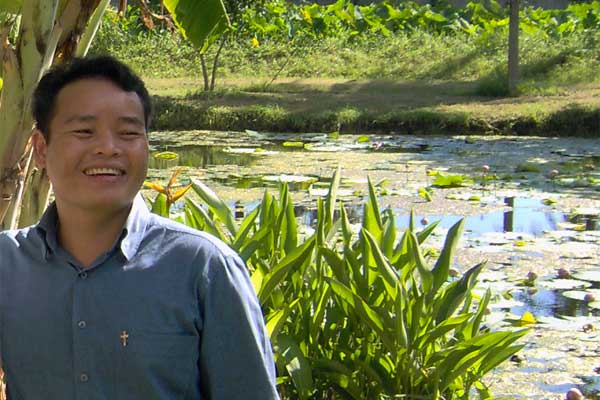
IN MEMORIAM FRANCE
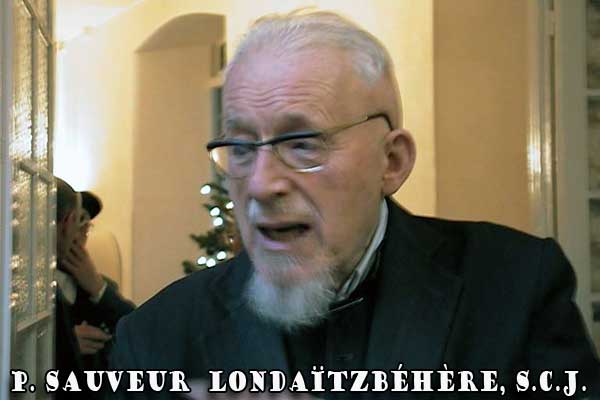
Hasparren, 1922 January 6th - Betharram, 2010 February 22nd
Born in Hasparren (France) on 6th January 1922, Fr Sauveur was educated at the apostolic school in Betharram. He did his novitiate in Balarin and made his vows in 1940. He was called up for force labour in Germany. For two years he was obliged to suspend his philosophy and theology studies. He was ordained priest on the 15th August 1947 in Jerusalem. After spending a year in Rome (at Our Lady of Miracles) he left for China as a missionary with Fr Seguinotte. He arrived in Tali on 30th March 1949. In 1950 he was sent to Hia-kouan, where there was a community of the Daughters of the Cross. Expelled from Yunnan, he arrived in Chiang Mai in May 1952. For the next 20 years his missionary activity was carried out in this country, and especially in Chiang Mai. On his return to France in the 70s he was sent first of all to Pau, and then from 1979 to Betharram when he spent the rest of his life.
I must admit something to you: this is the first time that I have been asked to pronounce a homily for a Betharramite religious. When I accepted to comment on the Gospel two facts came to my mind linking me with Father Saviour. He was born in Hasparren. I was born in Hasparren too. Every time we met, he used to recall a certain former assistant priest in Hasparren whom he greatly appreciated, a certain Arnaud Delgue, a great uncle of mine and my fathers godfather. When I started my training in the seminary in Toulouse, he gave me a breviary which had belonged to my grand uncle and which I keep preciously to this day.
This afternoon, Fr Londaizbehere assembles us in this chapel of Our Lady of Betharram. He has passed into his eternity. Each and every one of us is affected by his death for we were fond of him. How can we not recall his build, his voice, his life as a missionary in China and Thailand? As a missionary he was marked by his expulsion from China which left its mark on him for the rest of his life. And how about all those kilometres on his motorbike in the South West, with his cassock blowing in the wind. Sauveur loved Christ to whom he had given his whole life.
The Scripture readings which we have just been listening to pose a question for us. What is the fruitfulness of a religious life, or a priestly life in this year dedicated to the priesthood and in this sacred place chosen by the diocese as a place of pilgrimage? Is it possible to measure the results of a life given to Christ? What is the point of a religious, or of a priest? Can we estimate the life of a Religious-Priest in terms of usefulness? The Word of God is there to instil into us what goes to constitute our being as religious: the mystery of the total gift.
If the grain of wheat which has fallen to the ground does not die, it remains alone; but if it dies it produces much fruit. The grain must die so as to produce fruit. Thats fruitfulness! To die to self so as to give oneself to Christ. The essential is to be transformed by the Word of God, that Word of God which cannot be chained up, which never stops its race, which continues to be proclaimed by all the missionaries, by all the disciples of Christ in all circumstances, through all the trials which a disciple of Christ is bound to meet, through the human limits of the messengers of the Gospel.
In his body and in his heart Saviour felt the sufferings of the messengers of the Word of God. Messengers who have been rejected, silenced, expelled. Saviour always kept faith in Christ; he followed Christ right up to the end. (...)
The fruitfulness of a Religious Life is marked by resemblance with Christ. Was Christ a prophet in his own country? Was Christ understood by his fellow countrymen? Was Christ loved by his own? Christ gave his life for the salvation of mankind. Christ always said Here I am, Father! (...)
The usefulness of a religious life is shown in so far as that heart to heart with Christ is lived out in prayer, silence and the sacramental life. How can one announce the Word of God if it has not been listened to and contemplated? How is one to transmit the Word of God without being shaped by its power, the power of life and love? Sauveur has left us the witness of great faithfulness to prayer so as to be united with Christ, and to serve Christ. (...)
How can we not be full of hope? We have been called to live with Christ. If we die with Him, we shall live with Him. That is the height of fruitfulness! Yes, the grain which has fallen to the earth will bear much fruit. And so, how can we not give thanks for Saviours wonderful life? What he sowed has borne fruit. What he sowed in China, in Thailand or here in Betharram bears and will continue to bear much fruit. In Thailand where the missionaries have been replaced.
Homely by Fr. Jean-Dominique Delgue, SCJ
Betharram, 24th February 2010
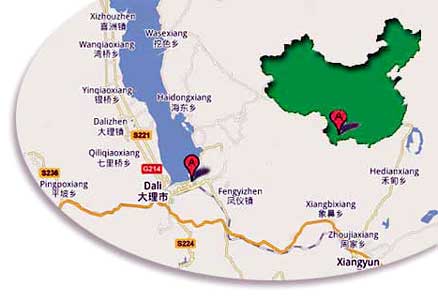 |
3. FIRST TRIALSby |
Yang-Pi was completely ransacked and the two Fathers who took care of the station were obliged to take refuge in the mountains. Three months later, Father Palou could return. A terrible sight was awaiting him: In the chapel everything had been taken. All that remained were a few framed pictures on the walls: one of the Sacred Heart, one of Our Lady and one of St Joseph. The crucifix had disappeared, the altar was completely bare, and the tabernacle door smashed in. On the ground were strips of materiel, the remains of vestments which had been slashed and cut up. Nothing was left of the school; the residence was pillaged. Two years later, the chief of the brigands who had been made a colonel meanwhile, kidnapped Father Pirmez and held him prisoner for some ten days.
In 1927 a terrible movement of xenophobia was let lose on the whole of China; two Jesuits were murdered in Nanking. In the face of such threats, foreign consuls advised their fellow countrymen to take shelter. Protestant clergy obeyed at once, but Catholic missionaries preferred to stay in the danger zone; this attitude increased the high esteem in which the native population held them.
Mentioning the Protestants reminds me that our Fathers were not the only ones working at the evangelisation of the population. In 1935 one of the missionaries wrote: We have a lot of rivals many more than we are and their ressources are infinitely superior to ours: I mean the Protestants. And he added: There arent even 20 of us for 33 sub-prefectures, and they are several per sub-prefecture He even mentioned one where there were no fewer then four married clergymen and five missionary ladies.
At the beginning of 1931, Father Etchart travelled to Burma to come to an agreement with the Apostolic Vicar in Mandalay about the evangelisation of a tribe at the Burmese-Chinese frontier; the Shans or the Tais. The following year Fathers Trezzi, Lacoste and Darnaudery left to learn the language of this tribe. Meanwhile a terrible trial had struck the young Mission: on his return from Burma, in April 1931, Fr Etchart had been carried off by a devastating illness. Before leaving France for the first time this Apostle had said: We are the first wave of troops and he was the first to fall at the age of 48. His last words: Is this the end? remind us of the non recuso laborem of the Apostle of the Gauls, accompanied by a tiny hint of a generous acceptance and resignation to Gods will.
In November, Mgr Salotti announced the nomination of the VRF Magenties Superior of the Mission. He had only ever spent three years in China. Under his guidance, progress continued. A school for catechists was opened and a seminary for future priests. Fr Darnaudery undertook the evangelisation of another tribe: the Katchins. In the South Fr Oxibar opened a new mission which, three years later, was to give magnificent results.
Document Actions






